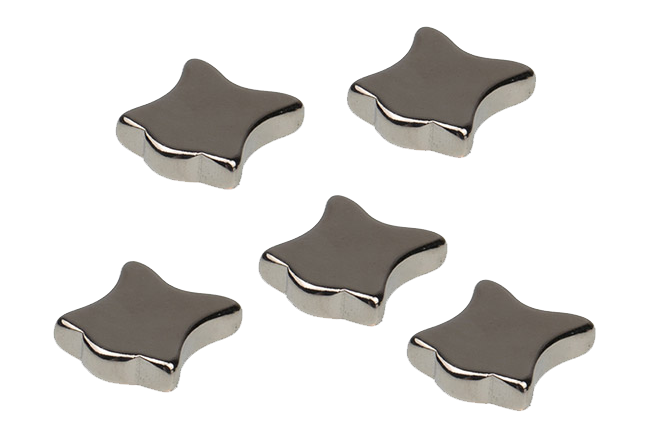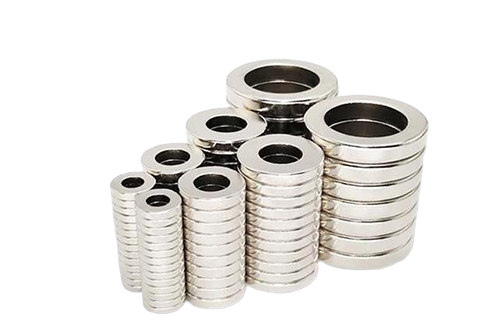

Neodymium itself is not a permanent magnet, but rather a chemical element (atomic number 60, symbol Nd) that serves as the primary component in neodymium-iron-boron (NdFeB) permanent magnets. These magnets represent a class of rare-earth permanent magnets that maintain their magnetic properties without requiring an external power source.
Composition of NdFeB Magnets
Neodymium magnets consist of:
Neodymium (Nd) - 29-32% of composition
Iron (Fe) - 64-68% of composition
Boron (B) - 1-1.2% of composition
Additional elements like dysprosium or terbium may be included to enhance specific performance characteristics.

Magnetic Properties
NdFeB magnets exhibit several notable properties:
High remanence (Br) ranging from 1.0 to 1.4 Tesla
Substantial coercivity (Hc) typically between 800-2000 kA/m
Maximum energy product (BH)max from 200 to 400 kJ/m³
Operating temperatures generally up to 150-200°C
Manufacturing Process
The production of neodymium-based permanent magnets involves:
1.Alloy melting and strip casting
2.Hydrogen decrepitation process
3.Jet milling to produce fine powder
4.Pressing in magnetic field alignment
5.Sintering at high temperatures
6.Machining to final dimensions
7.Surface coating for corrosion protection
Performance Characteristics
Compared to other permanent magnet materials:
Advantages:
Highest magnetic energy product available
Excellent cost-to-performance ratio
Good mechanical strength
Limitations:
Lower maximum operating temperature than samarium-cobalt
Requires protective coatings against corrosion
More brittle than some alternatives
Industrial Applications
Neodymium-based permanent magnets are utilized in:
Electric motors for automotive and industrial use
Computer hard disk drive actuators
Magnetic resonance imaging (MRI) systems
Audio transducer systems
Magnetic separation equipment
Permanent magnet generators
Technical Considerations
When implementing NdFeB magnets in designs:
Proper shielding may be required for sensitive equipment
Mechanical stresses should be minimized during assembly
Temperature limits must be observed
Corrosion protection must be maintained

Conclusion
While neodymium itself is not a magnet, its alloy with iron and boron forms the basis for the strongest commercially available permanent magnets. The NdFeB magnet family offers an optimal balance of magnetic strength, physical properties, and cost-effectiveness for numerous technical applications. Proper understanding of their characteristics enables effective implementation in various electromechanical systems.
Contact

We will contact you within 24 hours. ( WhatsApp/facebook:+86 15957855637)



